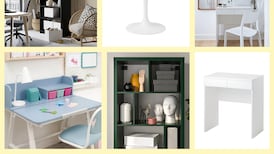At a bonding session for 2022 college freshers, students were asked for their names and an interesting fact about themselves. My eldest son introduced himself and said, “There are six coffee machines in my house.” Thankfully, lest his new classmates think he dwelled in some overcaffeinated mansion, when pressed for elaboration he told them his mother was testing four for a newspaper article.
In his count, he included the Braun filter/drip/hotplate/glass jug that we bought in Roches Stores in 2006, after a French holiday during which Middle Boy learned to walk; as well as a mouse infestation, our rented house had one such machine. We use this percolator everyday and add hot milk.
He counted the little Nespresso Inissia machine, on which I went halves with my father in 2017. Clutching a promotion torn out of a magazine, Dad and I charged into the shop just before it shut, and persuaded the salesman to give us the white display model as well as our advertised discount.
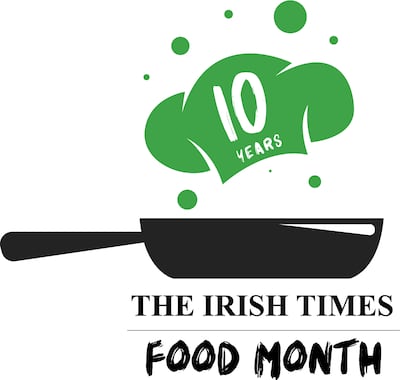
Made by Krups, and costing €99, it replaced a machine that we siblings had bought Dad for his 80th birthday in 2011. A connoisseur, he could find good coffee anywhere; he took great pleasure in the ritual of making coffee at home and enjoyed the trip to town to buy capsules. And when visiting him, we always loved being offered “a nice coffee”.
READ MORE
That machine packed up soon after it – and an ageing Dad – moved in with my family. The cost of getting it inspected, never mind repaired, was not much less than the new one, which has outlived him. Every time I use it, I think of the texts he used to send from Dublin Airport: “AT BUTLERS ALLWELL LOVEDAD”.
Hot chocolate with a twirl
My fresher son, whose coffee consumption extends to a weekly latte, had not counted the Bodum cafetière in the cupboard, which was a wedding present in 1999. He has never seen the lime-green Bialetti that I bought in a middle aisle a decade ago.
Nor had he noticed another on-trial milk machine that has twirled its way into our hearts. This Nespresso Barista Recipe Maker (€219) is about the size of a smoothie maker but much easier to wash. Its removable parts are a lid, a steel jug that sits into the base, and a magnetic wand that attaches to the jug. The Barista lights up with HELLO when you switch it on, and you press an arrow to display the programmes: flat white, cappuccino, mocha, affogato, café Viennois, iced frappé, and so on (there are recipes in a booklet, and on an app). Then you add milk and press start: it whirrs and whisks for two or three minutes, while you make your coffee elsewhere. The greatest excitement we had was adding squares of dark chocolate to cold milk, and inhaling the fragrant steam that rose out of the hole in the lid; it produced a small, dense hot chocolate. GOODBYE, blinks the Barista, before switching itself off. Although it’s expensive, and not officially part of the trial, we award it five stars.
[ What’s cooking in kitchen design for 2023?Opens in new window ]
Sage Bambino Plus ★★★★★
€469 currently; RRP €529
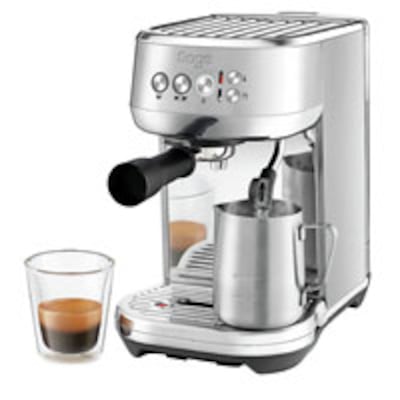
Stockist: Harvey Norman and other outlets
Size: 19.5cm wide by 32cm deep by 31cm high
This good-looking stainless steel machine got everyone in the house excited. Middle Boy considers himself a barista (having done a one-day course during transition year) and had it out of the box and set up within minutes, with water filter attached, 1.5-litre tank filled, and little steel jug, blade, tamper and dual-walled baskets handy. With a 15-bar pump for coffee extraction and milk steaming, the Bambino Plus heats up quickly and lends itself to experimentation with strength, temperature and texture. When you get it right, you produce a delicious brew with a fine crema; this was the best coffee we have made at home.
We got the best flavour when using freshly ground beans (using – ahem – machine number nine) and rich espresso roasts. However, at this entry level of the Sage range it is easy to get wrong; use too light a roast and it tastes washed out; put too much milk in the jug and it sprays everywhere; leave the jug there too long and you block the steam-wand-cleaning finale; lose focus and you’ll have a puddle of milky water or watery milk; forget to remove the used grounds from the brewing head and you’ll have to chisel them out next time (it would be useful, for the sake of the edge of your compost bin, to buy a knock box for tapping them). There’s a knack to inserting the brewing head – much of it to do with how well you level off the 20g measure and tamp it – plus you need a strong arm, and it’s slightly awkward for left-handed people. Within the past six weeks I have had only one takeaway coffee, and noticed the Bald Barista (on Aungier Street, Dublin 2) pouring the milk out the side of the jug, so I practised that but haven’t yet perfected latte art. If Sage users are keen to get more out of this machine, there are videos and courses online.
De’Longhi Magnifica Evo ★★★☆☆
€429.95; was €499.95
Stockist: Arnotts, Brown Thomas
Size: 23cm wide by 43cm deep by 34cm high
The market for automatic machines continues to grow, and De’Longhi is a long-established and trusted brand in the bean-to-cup sector. You can spend anything from a few hundred to a few thousand euro on a machine that does most of the work and uses grounds or beans to make a variety of coffees. I used the Magnifica Evo (ECAM 290.22B), which has four one-touch programmes; the number of settings, the degree of luxury and the automatic-ness increase as you go up the range, in spec and price.
This black machine takes up a lot of countertop and you need space above it for loading ground coffee – or beans, which it grinds on a scale of one to seven. The 1.8-litre water tank slots in and out easily, but bear in mind that it uses a lot of water for steaming, and for rinsing when switched on and off, so you need to keep a container under the spout and must remember to empty the drip tray often. The 15-bar pump ensures even extraction, and the used-coffee nuggets it spits into the collection box are easy to tip into the compost.
Some online reviewers share my view that it is rather noisy and my slight irk that even though a water filter is recommended, none is provided; the only accessory is a plastic measuring spoon. The steamer nozzle is short, but as it includes no steel jug, and ours is too big for it, I used a steel beaker and took great care with the plastic lever to ensure I produced steam and not hot water. The man in the instruction video whips a dishcloth out of his back pocket to wipe the milky pipe, but I opted to remove it and wash it. The coffee tastes great and has a rich crema, but you need to spend more money to expend less effort.
L’Or Barista Sublime Coffee ★★★★☆
€69.99 currently, €89.99 RRP, €6.99 for a pack of 10 capsules
Stockist: Dunnes Stores, Tesco, lorespresso.com
Size: 15.5cm wide by 40cm deep by 27cm high
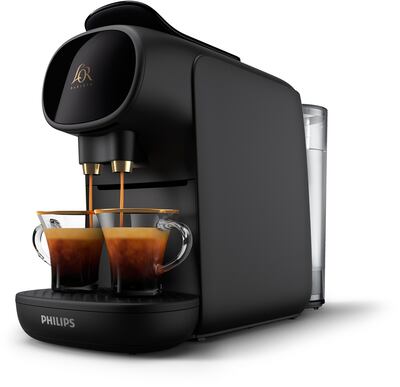
This neat, unfussy black machine, made by Philips, has two spouts and takes two sizes of recyclable aluminium pod. The XXL capsule, exclusive to the L’Or Barista, makes two espressos, two double espressos or a double-strength mug, depending on the setting. With an intensity of 13, the samples we received would certainly wake you up and the range of flavours includes a smooth decaffeinated option.
The machine is sturdy, not too big, easy to empty and clean, and the lid doesn’t lift very high so it fits under cupboards. The regular L’Or pod – we tried the lungo profundo, with an intensity of 8 – like those by Starbucks, Frank and Honest, Dunnes Simply Better and others available in supermarkets, is compatible with Nespresso machines. The L’Or box sports a Rainforest Alliance Certified badge, and states that the capsules are made in France with coffee from multiple origins. The company’s website has a downloadable Freepost label for recycling. This machine is handy if you want a quick, tasty coffee without a big production, although pods are not for everyone.
Nespresso Black Vertuo Plus ★★★☆☆
€199 RRP
Stockist: Harvey Norman, Brown Thomas, Arnotts, nespresso.com and other outlets
Size: 15cm wide by 43cm deep by 31cm high (26cm wide by 32cm deep if you bring the water tank to the side)
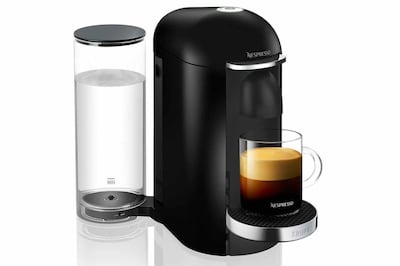
There are three machines – the Next, Pop and Plus – in the Vertuo range. These take large, hemispherical pods; at 5.5cm in diameter, they resemble Choc Mallows with an iridescent coating, and the sample box looks like an oversized eyeshadow palette. It contained 12 capsules ranging from espresso and double espresso to gran lungo and mug, varying in intensity from 4 (Voltesso) through Costa Rica (7) to 11 (Il Caffee) – a colleague refers to this strength as his morning jump leads – and there are decaffeinated varieties. Nespresso pods are made with 80 per cent recycled aluminium, and it accepts recycling bags in its outlets or will collect them if you get pods delivered.
After the straightforward set up, the pods go in the top and you push down a soft-close lever; the machine rotates and punctures the pod, reading the barcode on the lip so it knows whether you’re making a short shot or a tall cup. You can adjust the height of the sturdy honeycombed steel drip tray, and the empty-pod collector has good capacity. The outward curve of the machine looks very nice, but gave me drip anxiety; I’d prefer a concave front for the cup to sit into. You can tuck the reservoir around to the side and put your jar of pods in front to save space. But overall we preferred the flavour of the regular pods and will continue to use Dad’s machine and the percolator – maybe with a Barista for frothy milk and fancy hot chocolate.
Coffee and the environment
Whether it’s in a pod or a pot, drinking coffee has a huge environmental impact when you consider the impact on soil, water, tree canopy and other physical aspects of the landscape of all that planting, tending, harvesting, roasting, grinding, packaging and transporting. One estimate puts our worldwide consumption of coffee at 2 billion cups a day. And while some like those by 3FE and by Bellarom at Lidl are compostable, others contain plastic and cannot be recycled. Pods use the right amount of coffee, and there are some refillable pods available online, but despite all good intentions it takes effort to recycle the aluminium ones.
Organic and ethical brands of beans and ground coffee are widely available, and while cafetieres (French presses) and stove-top pots like the Bialetti use a fair amount of coffee but have no disposable or single-use parts; for percolators, unbleached paper filters are compostable, and some take reusable filters. All the machines I tested can fit KeepCups under the spout, so I have started to bring extra-hot home-made coffees out with me and stopped impulse-buying flat whites in disposable cups.

